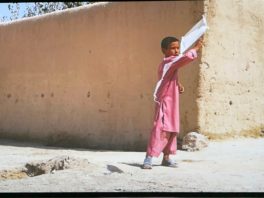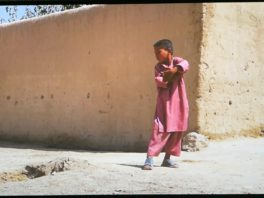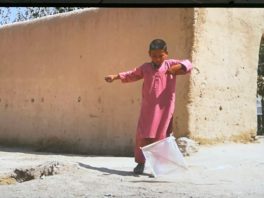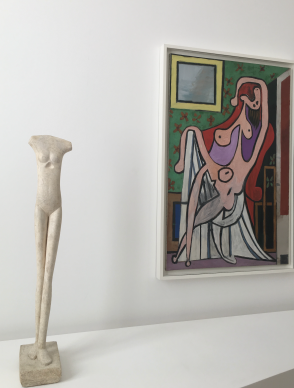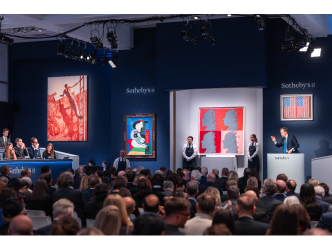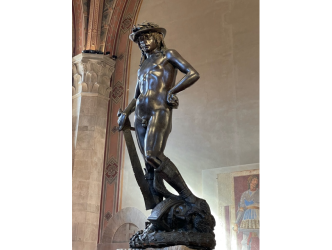Walter Benjamin
The visionary writer Walter Benjamin once said of Marcel Proust (1) that he admired “his astounding way of using the great poets’ method of taking their metaphors from everything that is close at hand and seems of no consequence”.
City flaneur
Walter Benjamin, like the Belgian artist who lives mainly in Mexico, Francis Alÿs (born in 1959), was a city “flâneur”.
Marcel Proust
And Francis Alÿs, like Marcel Proust, makes use of the raw material of everyday life to create metaphors through art.
Eye Museum

His video production dedicated to children’s games, a long-term project comprising 19 films dating back to 1999, is on display until 8 March in the setting of the astonishing Eye Museum in Amsterdam.
Many forms
Like the majority of relevant contemporary artists, Francis Alÿs’s work takes many forms.
Venice Biennale
He is often spoken of in relation to his participation in the Venice Biennale in 2001 where he decided to be represented by a peacock – an animal presumed to be vain if ever there was one – within the context of the giant temple to contemporary art.
Fabiola project

Since the 1990s he has collected depictions of Saint Fabiola – he now has over 450 – and stages exhibitions around the world where the work in question features this same Fabiola, copied and multiplied in infinite numbers and resembling, whose father has been forgotten, the portrait made by French 19th century painter Jean-Jacques Henner.
Small paintings
Francis Alÿs also often paints on a small scale, producing canvases that are traded by the powerful David Zwirner gallery, among others.
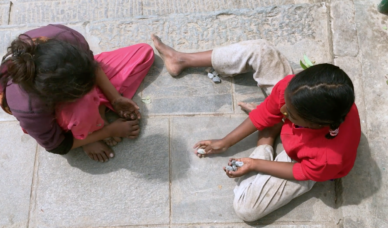
Not a market artist
But he is not really a market artist and it’s enough to visit his website to get free access to a large number of his videos and to potentially even share them. (http://francisalys.com/category/childrens-games/).
Children’s games
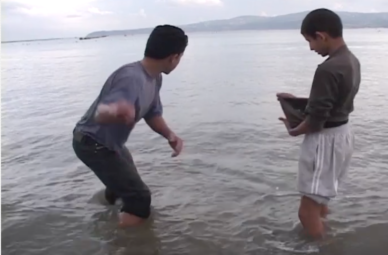
At the end of December Francis was therefore in Amsterdam to exclusively present his children’s games. He explains: “The children’s games were an excellent way of entering daily life in the places where I went. But children today, owing to the development of video games but also because they’re allowed to be out in the street less and less, don’t play outside as much.
Socially engaged

For these films I am trying to be as invisible as possible. Most of the time the thing must be caught on the fly, in one take. It’s socially engaged work. I want to be a part of what happens.” This is an allusion to his work which often takes place at borders, reflecting situations of conflict. From Kabul to Oaxaca, from Tangiers to Kathmandu, Francis Alÿs explores with infinite poetry children’s games as metaphors for their society.
Atlas of small societal rituals

He traces an emerging atlas of these small societal rituals.
Football with no ball
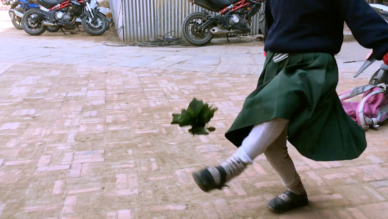
Like the film with the football match in which the little boys are running after a phantom ball. The game was forbidden by the Taliban. Alÿs wrote: “Sometimes doing something poetic can become political and sometimes doing something political can become poetic.”
Parallel world
There is a sense of restraint verging on austerity that gives Alÿs’s work a certain grace. No background music. The soundtrack is composed of children’s shouts and laughter, sounds from the street, and birdsong. It’s the inventory of a veritable parallel world, one which is important because it populates our memories.
Johannes Vermeer
An infinite poetry that was already captured by another artist in the 17th century in ‘The Little Street’, the most beautiful Vermeer there is. Coincidentally this painting, which ranks among the finest in the world, was on display at the Rijksmuseum at the same time as the Francis Alÿs exhibition opening was taking place. This is perhaps why it was all the more noticeable, right in the centre of the composition, that it features two children kneeling under the bench, at play in their parallel world.
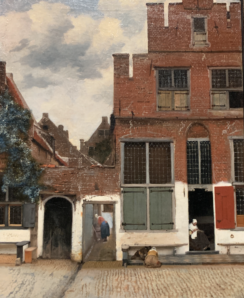

(1) Correspondance I — 28 December 1925, to H. von Hofmannsthal
Support independent news on art.
Your contribution : Make a monthly commitment to support JB Reports or a one off contribution as and when you feel like it. Choose the option that suits you best.
Need to cancel a recurring donation? Please go here.
The donation is considered to be a subscription for a fee set by the donor and for a duration also set by the donor.

